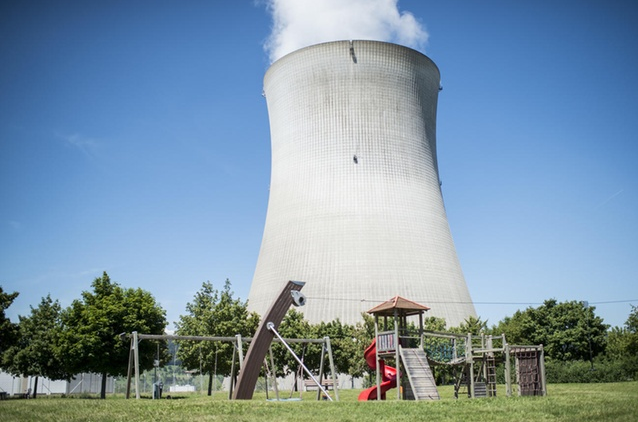Leibstadt was built in 1984 and is one of four nuclear power stations in Switzerland (Keystone) The Leibstadt nuclear power station in northern Switzerland has been disconnected from the power grid and shut down because of a technical fault. Once the cause has been clarified, the plant will be put back into operation as soon as possible, the operator said. It is not clear when that will be. The shutdown at Leibstadt – built in 1984 and one of four nuclear power stations in Switzerland – happened on Saturday at 7.48am. Prior to this, there had been “a technical fault in the non-nuclear part of the power plant”, the operator said in a statement. The Swiss Federal Nuclear Safety Inspectorate (ENSI), which supervises nuclear facilities in Switzerland, said protection
Topics:
Swissinfo considers the following as important: 3.) Swiss Info, 3) Swiss Markets and News, Featured, newsletter, Sci & Tech, Sci & Tech
This could be interesting, too:
Nachrichten Ticker - www.finanzen.ch writes Die Performance der Kryptowährungen in KW 9: Das hat sich bei Bitcoin, Ether & Co. getan
Nachrichten Ticker - www.finanzen.ch writes Wer verbirgt sich hinter der Ethereum-Technologie?
Martin Hartmann writes Eine Analyse nach den Lehren von Milton Friedman
Marc Chandler writes March 2025 Monthly

Leibstadt was built in 1984 and is one of four nuclear power stations in Switzerland (Keystone)
The Leibstadt nuclear power station in northern Switzerland has been disconnected from the power grid and shut down because of a technical fault.
Once the cause has been clarified, the plant will be put back into operation as soon as possible, the operator said. It is not clear when that will be.
The shutdown at Leibstadt – built in 1984 and one of four nuclear power stations in Switzerland – happened on Saturday at 7.48am. Prior to this, there had been “a technical fault in the non-nuclear part of the power plant”, the operator said in a statement.
The Swiss Federal Nuclear Safety Inspectorate (ENSI), which supervises nuclear facilities in Switzerland, said protection of the population and the environment had been guaranteed at all times. It added that the reactor had been shut down automatically in a so-called quick shutdown.
“The plant is in a safe condition. The automatic measuring network in the vicinity of the nuclear power plants has not shown any increase in radioactivity,” ENSI said.
Transducers replaced
Two reactor shutdowns had already occurred at Leibstadt in April and May 2019. Both had the same cause. According to ENSI a malfunctioning transducer led to incorrect values in a channel of the main steam pressure measuring system. These triggered a rapid closure of the turbine inlet valves.
After the second incident, the entire transducer was replaced and the problem was considered solved.
However, it was not only the technology but also the reduction in staff that had led to problems at Leibstadt, a federal report concluded at the end of August.
The report said the reduction in personnel since 2015 was one of the “main reasons for the problems at Leibstadt”. The operator said it intends to reduce the number of employees from around 500 to 470 by 2022, especially in non-safety related positions.
Saturday’s shutdown comes a week after the 47-year-old Mühleberg nuclear power plant near Bern was permanently switched off. It was the first Swiss nuclear power reactor to be decommissioned.
Tags: Featured,newsletter,Sci & Tech
